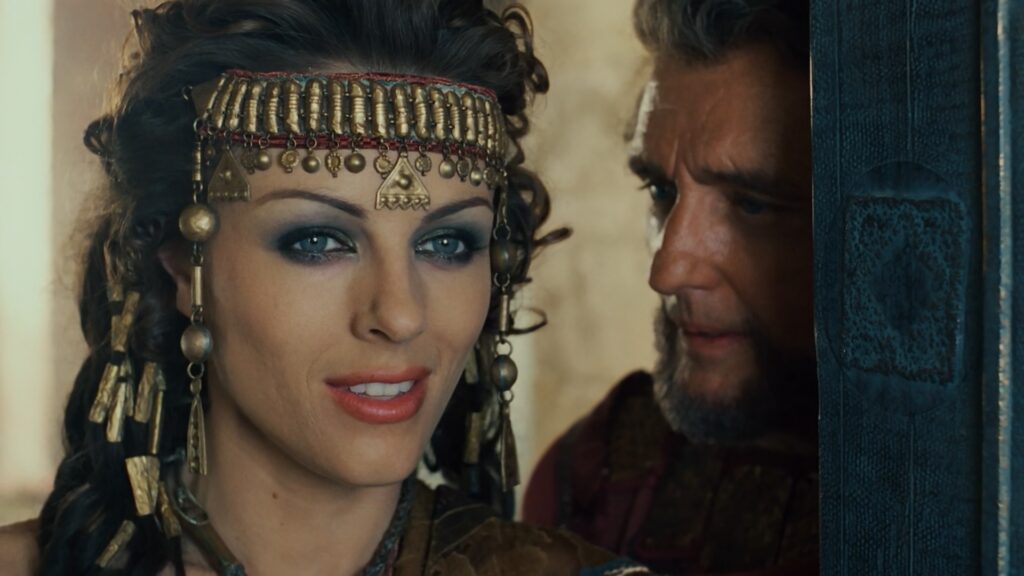
In spite of being a TNT production, Samson & Delilah (1996) still bears a few of the hallmarks of Nicolas Roeg’s inimitable style. However budget constraints and shooting conditions seem to have hampered some of Roeg’s bolder visual flourishes on this production. But for those with an interest in the director’s career, Samson & Delilah remains an important work, if only to demonstrate another facet of Roeg’s more commercial sensibilities. It’s also worth noting that the film was written by Roeg’s frequent collaborator, Allan Scott, who had previously penned Don’t Look Now (1973), The Witches (1990) and Cold Heaven (1991) for Roeg.
Roeg and Scott aren’t interested in the bombastic style and romanticism of Cecil B. DeMille’s far more famous Samson And Delilah (1949), opting instead to operate more in the vein of Martin Scorsese’s The Last Temptation Of Christ (1988). This neo-realist inspired adaptation of the Old Testament story does away with more fantastic elements like the foxes and rearranges elements of the narrative to make room for the parallel narrative of the Philistines. This choice grounds the film in a more contemporary reading of Biblical scripture where Samson is seen more as an Enkidu-type than as a traditional Judeo-Christian protagonist.
Roeg’s Samson & Delilah doesn’t cast Samson as a messianic figure, nor is the narrative treated as a cautionary tale about marrying outside of one’s faith and/or race, either being representative of a more traditional and fundamentalist interpretation of scripture. For Roeg, Samson is essentially Hercules born into the midst of an ongoing political conflict between the Israelites and the Philistines. Neither side of this conflict is relegated to simplification; both sides, and the characters representing those political factions, are complex and allowed to defy easy categorization as good or evil. Like The Last Temptation Of Christ, Samson & Delilah is antithetical to DeMille’s popular brand of Bible story and owes more to the traditions of Pier Pasolini and Derek Jarman.
I can also say, from extensive experience with this genre, that Samson & Delilah boasts some exceptional performances from an exceptional cast. The best known players are Dennis Hopper, Elizabeth Hurley, the late Diana Rigg, and Michael Gambon (reuniting with Roeg after working together a year earlier on Two Deaths). In particular, Hopper and Hurley shine the brightest; and when together their chemistry is so intense that even Roeg seems more inspired. But Elizabeth Hurley performs the greatest feat of all, she makes it believable that her Delilah could actually fall in love with Eric Thal’s Samson.
